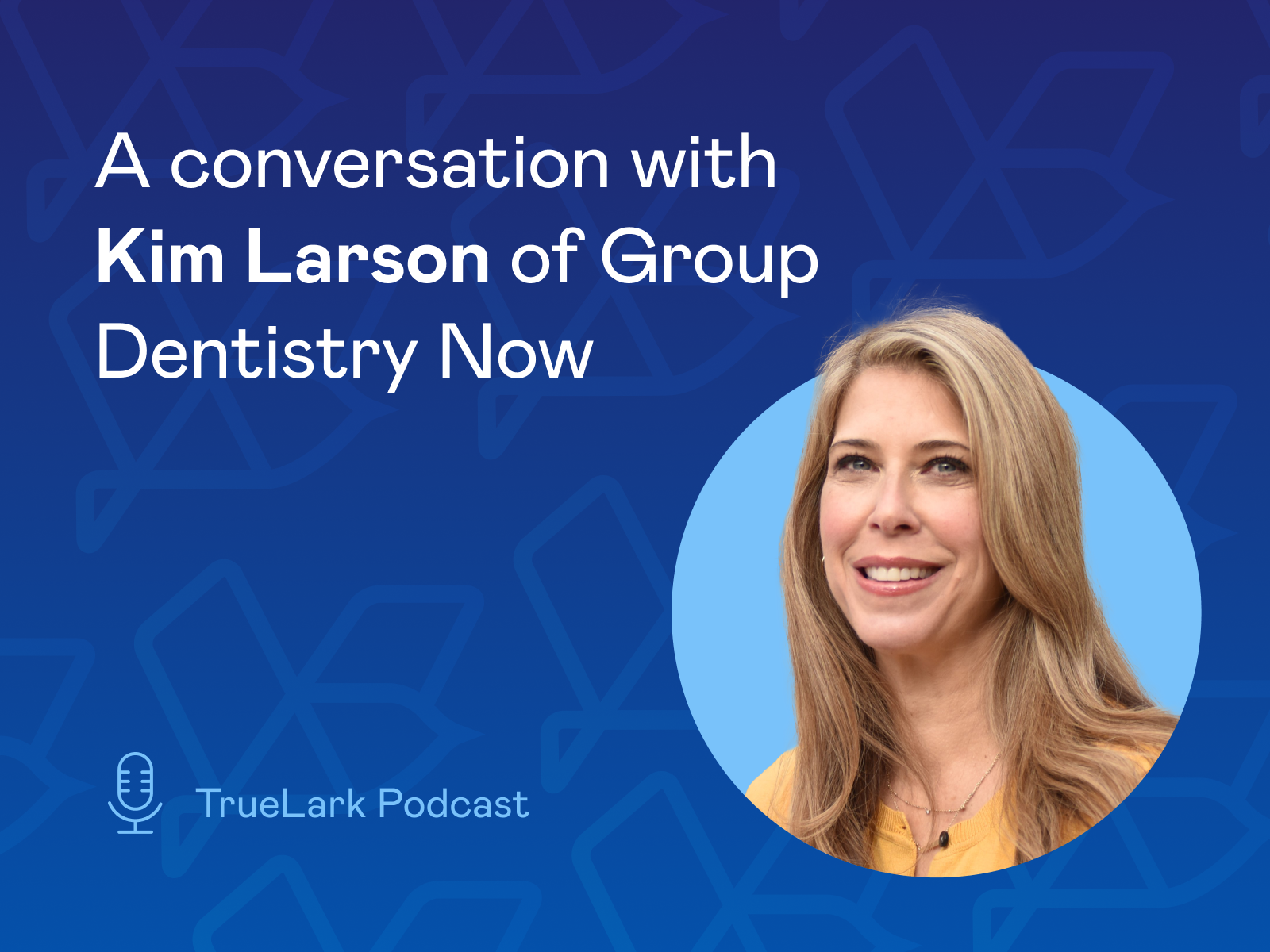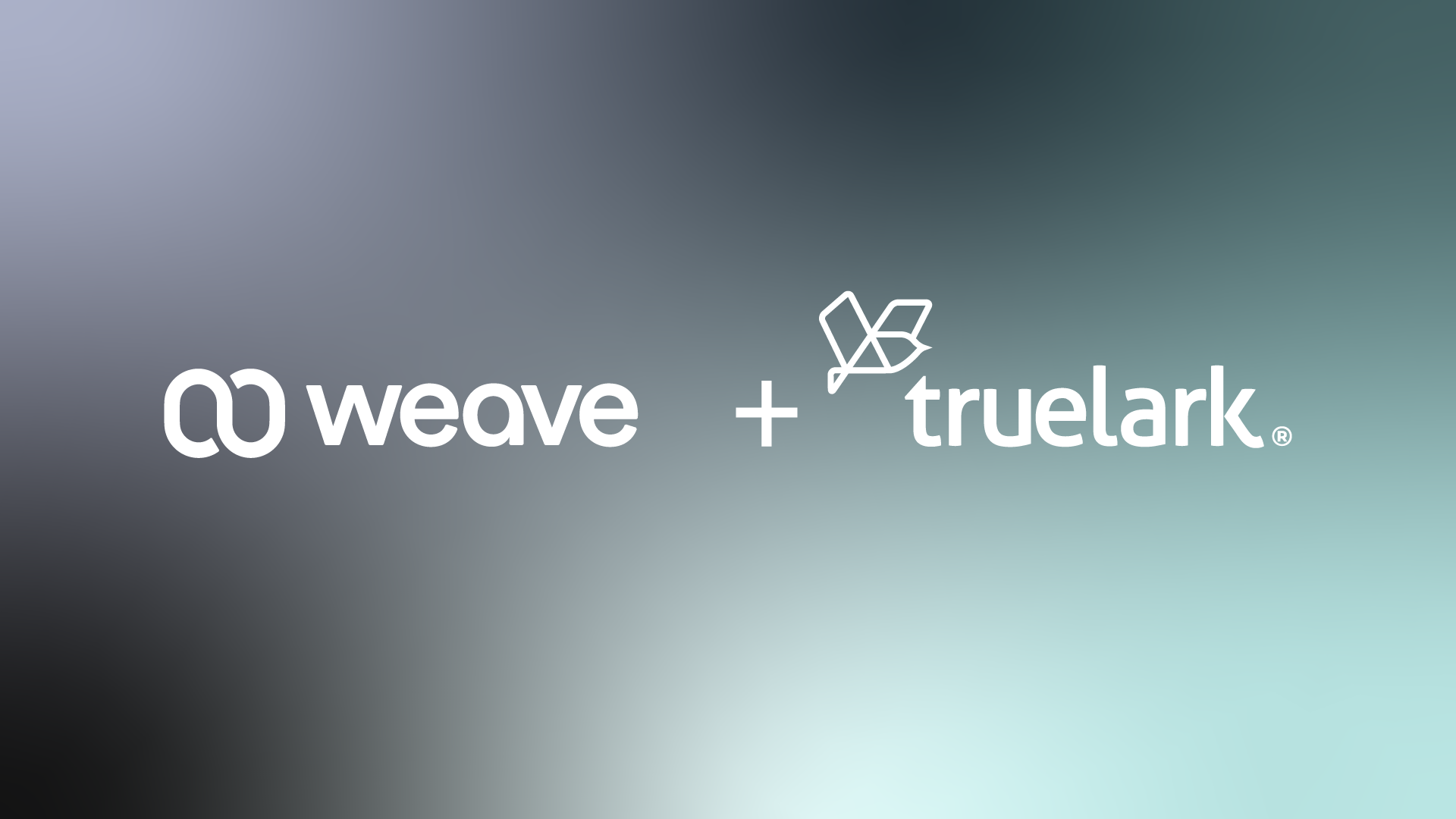In a recent episode of our podcast Navigating DSO Innovation, TrueLark’s Liz Strikwerda had the pleasure of sitting down with Kim Larson, co-founder and COO of Group Dentistry Now. With over a decade of experience dedicated to the Dental Support Organization market, Kim shared her unique perspective, touching on key DSO industry trends, challenges, and opportunities that DSOs face today.
The Evolution of DSOs: From Niche to Mainstream
Kim began by explaining how a decade ago, the term “DSO” (an acronym used for both Dental Service Organization and Dental Support Organization) was barely on the radar for many in the dental field. Today, Dental Support Organizations have become a significant force, driving consolidation and reshaping the landscape of dental care. Kim likened this transformation to what occurred in the medical field, where group practices became integral to healthcare delivery.
She reflected on how, during her early days in the industry, there was little positive information about Dental Support Organizations, with much of the conversation around dental group practices being negative. However, Kim saw the potential for DSOs to offer significant benefits, especially in increasing access to care, much like the evolution seen in the medical field.
“In 2012, I was at the CDA meeting in Anaheim, and DSO wasn’t even a term at that point,” Kim recalled. “The more I researched, I thought there are good aspects of this. So we decided to pursue it and start Group Dentistry Now. At the beginning, 10 years ago, I was literally piecing together articles from crumbs of nothing.”
Despite the initial resistance, Kim pointed out that DSOs offer advantages that solo practitioners cannot match — most notably, the ability to increase access to care in underserved areas. This mission, she emphasized, remains a driving force behind the growth of DSOs.
Reflecting on the early days, Kim shared, “We faced significant challenges, including aggressive attacks and harsh criticisms. Despite the fears and difficulties, we persevered and have successfully demonstrated that DSOs can offer capabilities and efficiencies that solo practitioners cannot match. This includes addressing the high costs of dental school and the substantial debt that new graduates face.”
She also mentioned, “On the hard days, I think, why am I doing this? Because we’re trying to increase access to care for all. Everyone deserves at least the opportunity to have access to dentistry. We pressed forward.”
Consolidation and the Changing Landscape
One of the most significant trends Kim discussed is the ongoing wave of consolidation within the DSO industry. While the pace of acquisitions has slowed somewhat from its peak, growth continues in both the number and size of dental group practices. Kim noted a shift in focus from sheer expansion to optimizing the profitability and efficiency of existing locations.
She attributed this shift, in part, to private equity (PE) investment, which has poured into the DSO space in recent years. While some DSOs have embraced this influx of capital to fuel their growth, others have opted to stay independent, focusing on organic growth rather than rapid expansion. Kim highlighted that this diversity in strategy underscores the varied approaches within the DSO landscape—what works for one group may not be suitable for another.
“The M&A landscape has shifted quite a bit,” Kim elaborated. “In the past, there was a lot of focus on high valuations and acquiring new practices. Now, the emphasis is more on organic growth. Larger DSOs are focusing on improving profitability and maintaining high-quality care at their existing locations rather than just expanding through acquisitions.”
She also discussed the emergence of de novo practices, where DSOs start new practices from scratch. This shift indicates a maturing industry that is evolving to balance growth with sustainability.
Kim shared, “We’re seeing some DSOs who were heavily into acquisitions now looking at de novo practices. While larger DSOs have slowed down their acquisitions, smaller and mid-sized DSOs continue to grow through acquisitions. The DSO Deal Roundup we publish shows that this activity is still robust.”
Challenges: Recruitment, Retention, and Culture
Kim acknowledged that despite the opportunities, DSOs face significant challenges, particularly in recruiting and retaining clinical staff. She noted that many DSOs struggle as they grow from a handful of practices to a dozen or more. Without strong systems and processes in place, these growing pains can be severe.
“Another critical issue is culture,” Kim emphasized. “Culture is absolutely key because in order to retain people, you have to make them feel valued. In order to recruit people, you have to make it so that your company is worth switching to and not just for a dollar extra an hour. It has to be more than that. It has to be an all-around culture issue.”
Kim further elaborated on the importance of differentiation in a crowded market. With the number of dental groups doubling over the last decade, she stressed the need for DSOs to find their unique identity. “How are you different from another group?” she asked, pointing out that relying solely on dentist autonomy or taking care of non-clinical duties isn’t enough. “Everyone says they do that. So how are you different? Are you giving back to your communities through service projects?”
Kim also highlighted the importance of strong leadership and mentorship within DSOs, especially for new dentists. “You want to make sure that you’re with a group who can offer you really strong mentoring because you want to get your skills up and you want to get your confidence up. Those are two key things to having success and purpose.”
Medical-Dental Integration
She also mentioned the growing trend of dental-medical integration. “We’re seeing a shift in that. PDS, Pacific Dental Services, has just rebranded as Pacific Dental Services Health. They have a huge initiative for dental-medical integration. They have these salivary tests that they do in their practices that test for other systemic things that are going on in the body.” This integration, Kim noted, is an emerging area that could further enhance care coordination within DSOs.
Looking Ahead: The Future of DSOs
Looking to the future, Kim anticipates that DSOs will continue to play a central role in expanding access to quality dental care. She expects further integration with medical care providers and a continued emphasis on building strong company cultures as DSO growth strategies. These elements, she believes, will drive future growth and success in the DSO sector.
Reflecting on the next decade, Kim mentioned, “One of the leaders in the space believes that in the next 10 to 15 years, the dental market will be about 75% consolidated. Now, of course, some people in organized dentistry would probably disagree with that, and that’s fine. That’s their opinion. But in our opinion, this consolidation is going to continue.”
Group Dentistry Now: A Key Resource for DSOs
Kim also discussed the role of Group Dentistry Now (GDN) as a key resource for DSOs. She explained that Group Dentistry Now provides essential services such as news, education, consulting, and career placement specifically for DSOs. With a decade of experience in this field, Kim offers valuable perspectives on the growth, challenges, and future of DSOs.
Reflecting on the past 10 years, Kim shared that the most rewarding aspect of her work has been increasing access to care for all. Despite the challenges, this purpose keeps her motivated. Highlighting DSOs that excel in patient and clinician satisfaction and contributing to a purpose-filled life is incredibly fulfilling for her.
At TrueLark, we’re committed to supporting DSOs in a maturing industry Our AI-driven solutions are designed to enhance patient communication, streamline operations, and ultimately help DSOs fulfill their mission of providing accessible, high-quality dental care.



















